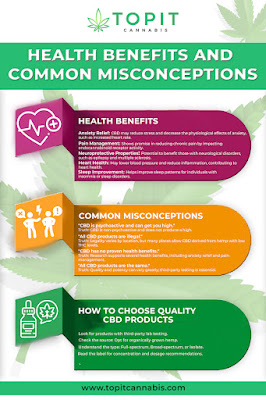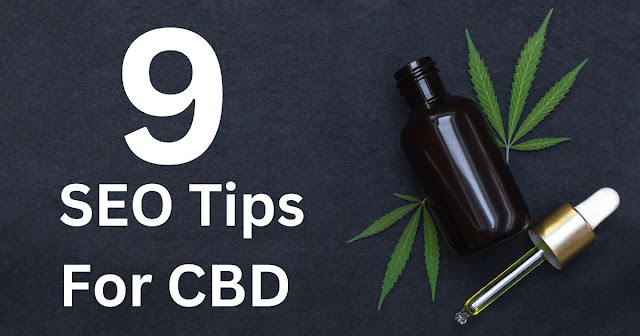Cannabis marketing represents an exhilarating and competitive niche for ambitious marketing agencies. This industry is not just vibrant and bursting with creativity; it is rooted in products that stand for humor, wellness, community, and relaxation, making campaign development a truly enjoyable venture. However, clinching deals within the cannabis sector can prove to be a challenging endeavor. Despite these challenges, with projections indicating that U.S. cannabis businesses could contribute as much as $100 billion to the economy by 2024 (Marijuana Business Fact book), the opportunity for securing lucrative contracts is vast and promising.
Sales Process for Cannabis Marketing Agencies
In the competitive cannabis market, companies often deliberate the value of partnering with a marketing agency, especially when internal marketing capabilities are already in place. This hesitation is understandable; many cannabis businesses operate on razor-thin margins due to challenging market conditions. The need for concrete, measurable outcomes to justify any financial commitment is more pronounced than ever. For marketing agencies specializing in cannabis, the ability to identify qualified prospects and effectively guide them through the sales journey is what truly sets them apart, enabling market expansion and client success.
A meticulously designed sales process brings much-needed clarity and consistency, allowing agencies to methodically tackle the unique hurdles of the cannabis sector. These hurdles include establishing trust, qualifying leads, nurturing potential clients, and ultimately, securing deals. A well-defined sales strategy acts not just as a navigational guide through these steps, but also as a pivotal tool in addressing the industry-specific obstacles and driving substantial revenue growth. Dive into our detailed 5-step strategy to learn how your agency can enhance its deal-closing capabilities in the cannabis market.
Step 1: Know Your Audience and Create a Buyer’s Journey
Understanding your audience is key to any marketing strategy. For cannabis marketing agencies, this means knowing not just dispensaries and brands but also the wider ecosystem including cultivators, labs, and tech providers. These businesses face unique challenges, such as navigating regulations and standing out in a crowded market. By understanding these challenges, agencies can offer tailored solutions that resonate.
Target Audience Examples
- Dispensaries need to highlight quality and customer experience.
- Cannabis Brands focus on building loyalty and recognition.
- Equipment Providers emphasize their cutting-edge technology.
- CBD Manufacturers work on distinguishing their brand in a competitive space.
- Testing Labs aims to build trust through their expertise.
- Tech Providers market solutions for inventory and compliance.
- Seed Banks highlight unique strains to attract customers.
- R&D Firms showcase innovations to investors and stakeholders.
Every business goes through a buyer’s journey of awareness, consideration, and decision-making. Tailoring this journey to meet your target market’s specific needs can enhance your sales strategy.
Crafting a Buyer’s Journey
- Awareness: Create content (blogs, infographics, social media posts) to help potential clients recognize their challenges and see your agency as a solution.
- Consideration: Use case studies, webinars, and guides to showcase your expertise and address specific pain points.
- Decision: Offer demos, free trials, and testimonials to convince clients your services are the best choice.
Remember, the goal is not to push your services but to guide potential clients through their journey, making it clear how you can help them at each step.
Step 2: Build a Strong B2B Prospecting Plan
Prospecting is the first step in finding new clients. It's when sales teams look for and start talking to potential customers who might want their marketing services. Think of it as creating a list of businesses that could become your next clients. This process uses a mix of methods to find people interested in what you offer, aiming to turn them into paying customers.
There are two main ways to do this: inbound and outbound. Inbound methods are about making potential customers come to you. You do this by creating helpful content, being active online, and offering valuable information that pulls people in. This could be through blog posts, improving your website so it shows up in search results, using social media, or making eBooks and webinars. The idea is that people find you during their research or when they're engaging with your content.
On the other hand, outbound methods are when you reach out first. This includes calling or emailing people who haven't contacted you yet, sending mail directly, or placing ads aimed at specific groups. It's a more straightforward approach where you start the conversation, often based on research or qualities that show they might be a good fit for what you offer.
A smart prospecting strategy mixes both inbound and outbound ways, chosen and used with specific goals in mind. Goals can be anything from getting more clients, making more people aware of your brand, or encouraging certain actions. Having clear aims helps businesses focus their efforts, track how well they're doing, and tweak their methods to get better results.
Step 3: Create a Simple Guide for Your First Chat with Potential B2B Clients
The first chat, or discovery call, with a potential client, is all about getting to know them. You'll want to figure out what they need, what challenges they're facing, and what they're hoping to achieve. Sometimes, clients might be a bit reserved during this initial chat. To get them to open up, it's crucial to listen well, show empathy, and be genuinely interested in their business. Once they feel understood and comfortable, it's easier to ask specific questions that help you understand if what your agency offers is what they need. Creating a simple one-page guide with the right questions can make this process smoother. Below, you'll find our top 10 questions to kick start these conversations with potential cannabis industry clients!
Top 10 Questions to Ask Potential Clients in the Cannabis Industry
- What goals do you have for your cannabis business's advertising right now?
- How do you split your advertising budget across different types of media and platforms?
- Are there any big challenges you're currently facing with your advertising efforts?
- Who are you trying to reach with your cannabis products/services? What do you know about their age, interests, etc.?
- What kinds of messages or content have you found your target audience likes?
- Have there been any advertising strategies you've tried that worked well or not at all?
- Where do you see big chances for growth in the cannabis market, and how do you want to use advertising to grab those opportunities?
- How do you decide if your advertising is working well?
- When are you looking to start new advertising projects?
- Who else in your company will be making decisions about this?
Step 4: Make Your Sales Talk Work Wonders in the Cannabis World
A sales talk is your chance to show a possible customer why they should pick your marketing services. Think of it as the moment in a conversation where you get to shine by proving how much you can help them during the “Consideration Phase.” A knockout sales talk should have these bits:
- You get what the client wants and what’s happening in the market.
- You make it clear why your service is the best choice.
- You have answers for their biggest headaches.
- You outline a straightforward plan to get started.
Winning over a client is all about telling a great story. It means listening to what the client needs and showing off what makes your agency different and better. You can do this by sharing stories of your success, showing that you know the cannabis industry inside and out, and pointing out how you’ve tackled similar challenges before. By weaving a story that hits on the client's main concerns, you come across as the “partner with a plan.”
Step 5: Sealing the Deal: Simplified Tips for the Cannabis Industry
Closing a sale, or making that final step to get a commitment, is crucial. It's about asking your potential client to say "yes" to your marketing services. To get ready for this, smart salespeople think ahead about possible hurdles. They ask questions to dig into any doubts their clients might have, which helps them give clear, confident answers. Here are some simple questions to help uncover doubts:
- What worries or doubts do you have about going ahead with our service?
- Are there any problems you see coming up with using our solution?
- Is there anything in particular stopping you from deciding right now?
The best sales talks end in a win-win situation, where both you and your client feel good about the deal. Smart salespeople aim for this by using "trial closes" throughout their talks. These are small checks to see how interested the client is and to address any worries along the way. This makes the final "yes" more likely because they've been making sure the client is on board from the start.
How to Handle Sales Doubts
- Listen Well: Let the client share their concerns fully without cutting them off.
- Show You Understand: Make it clear you get their concerns and value their point of view.
- Ask More: Use follow-up questions to understand their doubts.
- Answer Directly: Give clear answers or information that speaks right to their concerns.
- Suggest Solutions: Offer ideas that tackle their specific doubts.
- Show Proof: Share stories or examples where your service helped others successfully.
- Be Ahead of Doubts: Talk about common concerns in your pitch before they even come up.
- Stay Positive: Keep confident and positive about what you're offering.
- Ask for the Sale: Once doubts are cleared, go ahead and ask if they're ready to buy.
- Keep in Touch: If they're not ready yet, follow up later. Keep the connection and keep offering value.
Understanding Your Results
Keeping track of your sales efforts helps you see what's working and what's not. You'll want to look at things like:
- How many sales you're making
- How you're finding potential clients
- The average size of your deals
- How long it takes to make a sale
By understanding these, marketing agencies can get better at finding and winning over clients. Regular check-ins on these points can lead to better strategies and more wins.
Steps to Success
The path to winning more deals for your cannabis marketing agency involves knowing your audience, guiding them through their buying journey, creating tailored pitches, and closing deals effectively. This guide is based on real success stories in the cannabis field. We encourage you to use these strategies to grow your agency as the cannabis market keeps expanding. Now's the time to put these proven methods into action and succeed in the dynamic world of cannabis marketing.








